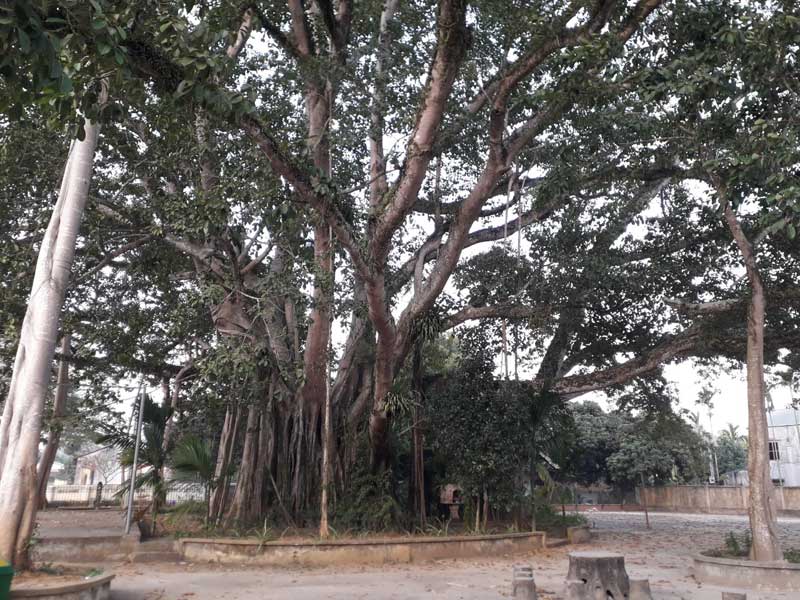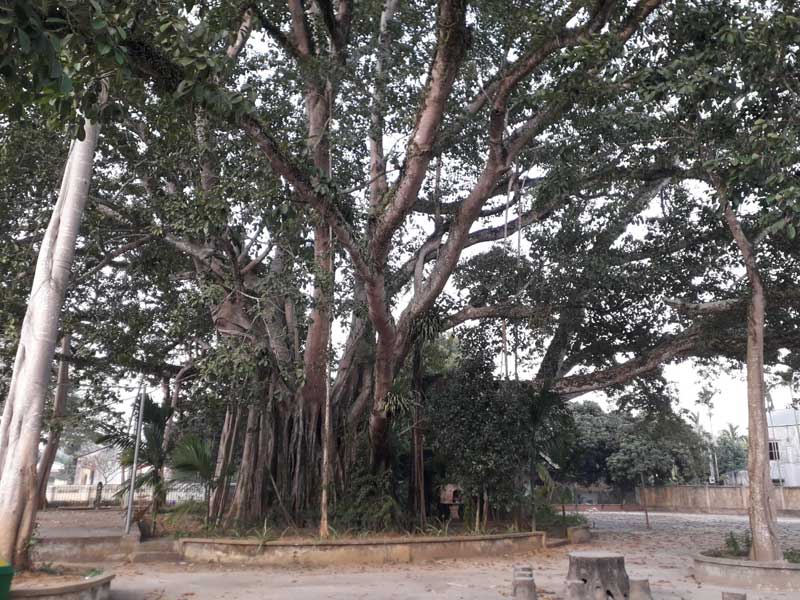
(HBO) - The land of Muong in Hoa Binh is considered as the cradle of the ancient Vietnamese people, containing long-standing and distinctive cultural features with many tangible and intangible cultural values that are preserved and promoted, enriching the image of the hometown.

The ancient banyan tree in Bao hamlet, Thanh Hoi commune (Tan Lac) has been evaluated to meet the criteria for achieving Vietnamese heritage tree by the Department of Cultural and Historical Heritage Preservation and the Department of Biodiversity Conservation.
Up to now, gongs of Muong in Hoa Binh has twice been honored when setting a Vietnamese Guinness record for street gong performances and parades. In particular, the first time is in 2011 on the occasion of 125 years of establishment of the province and 130th anniversary of the establishment of the province with the performance of 2,000 artisans and artists inside and outside the province. The sound of gongs echoes and converges the cultural quintessence of 4 Muong: Bi, Vang, Thang, Dong, creating power, good impression of a friendly and hospitable Hoa Binh.
The old banyan tree in Bao hamlet, Thanh Hoi commune (Tan Lac) has also been evaluated to meet the criteria for achieving Vietnamese heritage tree by the Department of Cultural and Historical Heritage Preservation and the Department of Biodiversity Conservation. This banyan tree has a strong vitality with time, converging the spiritual and cultural values of Muong Bi land. In the mind of the local people, the banyan tree is to bring reproduction, bloom, good luck, good crops and peaceful life.
The Week of Culture - Tourism of Hoa Binh Province in 2019 has just been organized. The province has established the biggest special food tray on leaves of Vietnam. They have organized a lot of cultural activities with distinguishing identity, introducing the land, the culture, the people and the beautiful nature as well as promoting the tourism potential of the province to a large number of tourists from all over the country and overseas.
In particular, the special food tray on leaves is the convergence of the exquisite cultural beauty in the culinary life of Muong people in Hoa Binh. It is the subtlety in the way the food is processed, the form of arrangement and presentation which are in the harmony with nature. Every food, every dish is very specific, imbued with the culture of Muong ethnic people. The steamed vegetables (Dom vegetables, grapefruit leaves, wild tomatoes, different other kind of leaves, lettuce vegetables, young litchi fruits ...) are cooked in such a way that they ensure the sweetness, retaining the natural flavour, acidity, acridness, when being dipped with ginger salt water, both sweet and spicy flavour can be created, which is a valuable remedy for the body.
All kinds of pork, chicken, fish of the local people, which are raised and caught by themselves, ensure the cleanness and the freshness. The sticky rice is the quintessence of heaven and earth, the product made from the industrious hand of human beings. The sticky rice of Muong must be steamed in a new wooden jar so that it is airtight and fragrant. When the sticky rice is on the disc, it is emitted like a flower, showing prosperity and fullness ... On the occasion of the New Year, the special food tray on leaves is placed on the altar to worship the God, the ancestors, praying for a good rainy year, a good harvest and good health for people to make more rice and corn. After the worshiping ceremony, the whole family or the whole village gathers around the special food tray on leaves to enjoy the traditional dishes, wishing each other good health and well-being.
The deputy Director of Department of Culture, Sports and Tourism, Mr. Luu Huy Linh says Hoa Binh is an ancient Muong land with special and precious cultural values that are treasured and preserved in the lives of ethnic minorities and increasingly promoted, giving an important contribution to creating a richness for the Vietnamese ethnic community.
Gongs hold a special place in the cultural and spiritual life of the Muong ethnic people in Hoa Binh province. More than musical instruments, they are an indispensable part of community rituals and collective memory, echoing through generations as a spiritual thread linking the past, present, and future.
Preserving and promoting the cultural values of the Muong ethnic group has become an urgent task in the current context, as many traditional values face the risk of fading away. This effort requires not only protecting the cultural identity but also eliminating outdated customs and developing a modern cultural lifestyle, contributing to sustainable values for the Muong community in Hoa Binh province.
The Muong ethnic culture, deeply rooted in Vietnam’s mountainous north, continues to be preserved and revitalised by dedicated individuals and communities determined to safeguard their ancestral identity.
The Muong group is one of the largest ethnic minorities in Vietnam, primarily found in Hoa Binh province. The Muong people in Hoa Binh boast a rich and diverse cultural treasure that reflects the unique identity of this ethnic group. Accounting for over 63% of the province's population, they have created and preserved numerous distinctive cultural values, contributing to their unique identity. Their cultural heritage is an invaluable asset, at the heart of their national identity, and represents a vibrant spiritual life that must be preserved and promoted in today’s modern world.
For generations, the ethnic communities of Hoa Binh province, particularly the Muong people, have preserved vibrant festivals deeply intertwined with the region’s geography, nature, and social traditions. These celebrations enrich Hoa Binh’s spiritual life and cultural identity, reflecting both folk beliefs and the intermingling of ethnic customs. Many of these festivals have endured the test of time, passed down through generations and continuing to thrive today. Among them, the Khai Ha (Going Down to the Field) festival stands out as one of the most significant events of the Muong ethnic group.
Muong calendar, known as sach doi, is an ancient folk knowledge system developed through observations of the movement of the pleiades star. This unique calendar consists of 12 bamboo sticks, each representing a lunar month. Specific days within each month are marked with distinct symbols, guiding locals in determining auspicious and inauspicious days for important activities.



